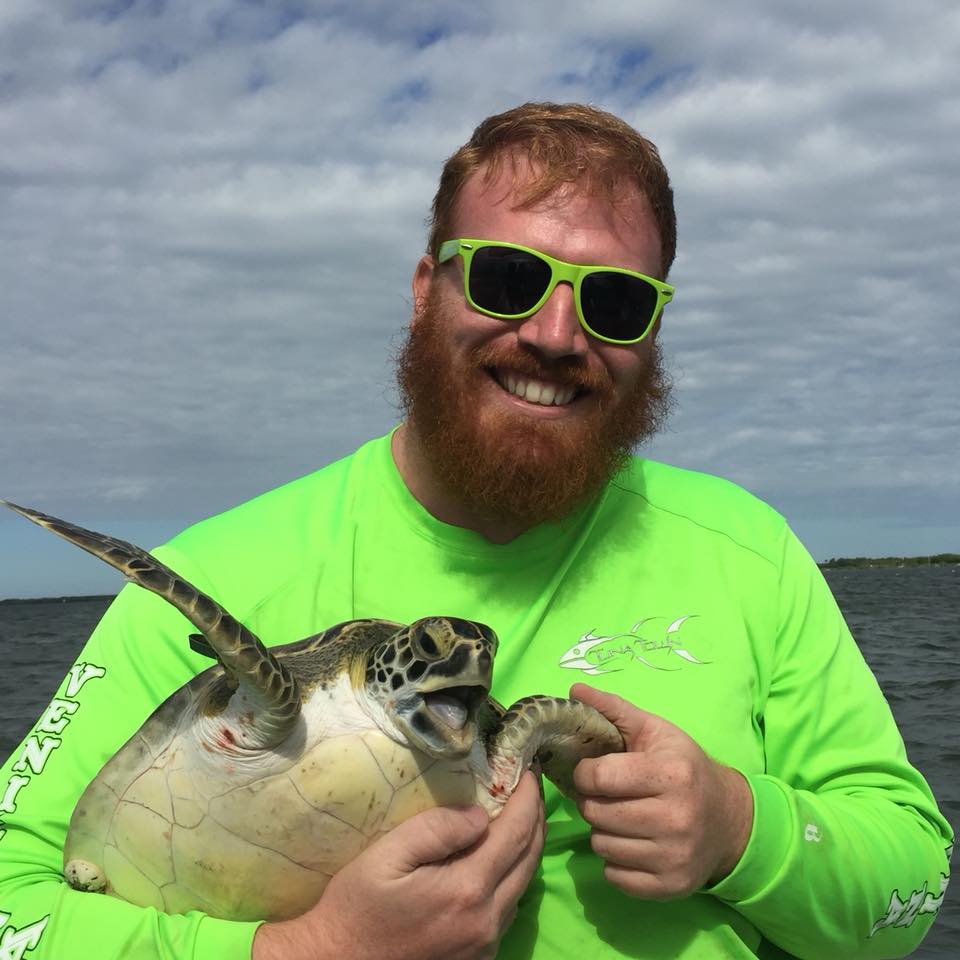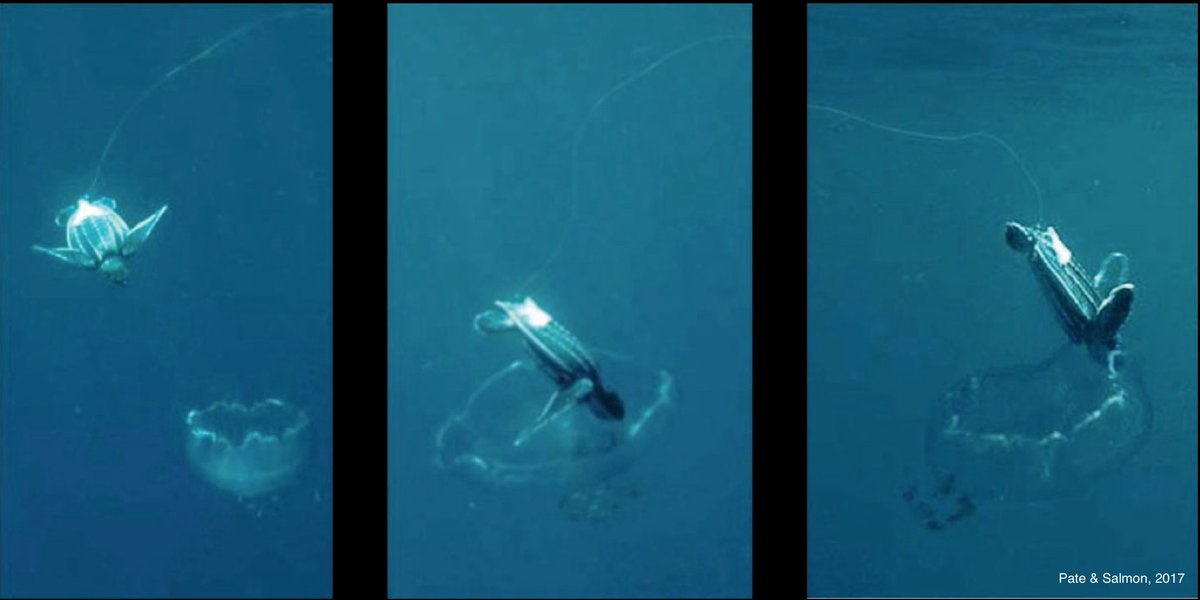Discover and read the best of Twitter Threads about #TurtleTuesday
Most recents (7)
Welcome to my #TurtleTuesday #SeaTurtleTalk! Search these hashtags to find other amazing "talks" from the sea 🐢 community! My talk is about my recent paper “Incongruent long-term trends of a marine consumer and primary producers in a habitat affected by nutrient pollution” (1/8) 

1/7
#SeaTurtleTalks: Trends in Florida sea turtle size at maturity
Located on the east coast of Florida, USA, the Archie Carr National Wildlife Refuge hosts tens of thousands of sea turtle nests every year. It’s an ideal site to study population trends.
#TurtleTuesday 🌊🐢
#SeaTurtleTalks: Trends in Florida sea turtle size at maturity
Located on the east coast of Florida, USA, the Archie Carr National Wildlife Refuge hosts tens of thousands of sea turtle nests every year. It’s an ideal site to study population trends.
#TurtleTuesday 🌊🐢

2/7
The #UCFTurtleLab has been monitoring sea turtles in 21 km of the #ArchieCarrNWR since the early 1980s.
Loggerhead nest counts have been fairly consistent over time, while green turtle nests have increased.
The #UCFTurtleLab has been monitoring sea turtles in 21 km of the #ArchieCarrNWR since the early 1980s.
Loggerhead nest counts have been fairly consistent over time, while green turtle nests have increased.

3/7
We use calipers to measure nesting sea turtles at night.
Our crew noticed that small turtles seemed to be more common, so we decided to look at the data.
#longtermdata #fieldwork #UCFTurtleLab
We use calipers to measure nesting sea turtles at night.
Our crew noticed that small turtles seemed to be more common, so we decided to look at the data.
#longtermdata #fieldwork #UCFTurtleLab

1/7 #SeaTurtleTalks
"Stranded turtle bones reveal divergent life-history characteristics for critically #endangered #hawksbill #seaturtles inhabiting US waters"
Sometimes🐢wash ashore (strand) dead. Let's talk about what their🦴can tell us about their past life. #TurtleTuesday
"Stranded turtle bones reveal divergent life-history characteristics for critically #endangered #hawksbill #seaturtles inhabiting US waters"
Sometimes🐢wash ashore (strand) dead. Let's talk about what their🦴can tell us about their past life. #TurtleTuesday
2/7
Global #hawksbill pops. declined >80% in the past 100yr. Study of immature🐢was recently identified as🌎priority. Hawksbills typically inhabit🌴coral reefs but juveniles also forage in subtropical US waters➡️Texas & Florida. Yet, little is known about their ecology in the US
Global #hawksbill pops. declined >80% in the past 100yr. Study of immature🐢was recently identified as🌎priority. Hawksbills typically inhabit🌴coral reefs but juveniles also forage in subtropical US waters➡️Texas & Florida. Yet, little is known about their ecology in the US

3/7
To address this knowledge gap, we studied the growth layers, #stableisotopes & #traceelements in the🦴of 94 US-stranded turtles (1989–2012). This led to new data on:
1⃣ stage duration (oceanic vs. neritic)
2⃣ size-at-age relationships
3⃣ age-at-maturation
4⃣ growth rates

To address this knowledge gap, we studied the growth layers, #stableisotopes & #traceelements in the🦴of 94 US-stranded turtles (1989–2012). This led to new data on:
1⃣ stage duration (oceanic vs. neritic)
2⃣ size-at-age relationships
3⃣ age-at-maturation
4⃣ growth rates


1/7 Evidence for the independent evolution of visual perception during seafinding by hatchling leatherback sea turtles (Dermochelys coriacea) 🐢#SeaTurtleTalks #TurtleTuesday 

2/7 Hatchling sea turtles crawl toward the lowest and brightest horizon when they emerge from nests at night #seafinding. Differences in spectral sensitivities driven by different life histories could lead to the independent evolution of this innate behavior. #SeaTurtleTalks 

3/7 Leatherback sea turtles are the largest and most distantly related extant sea turtle species. They are uniquely deep-diving, pelagic across all life stages, and forage exclusively on gelatinous zooplankton making their visual environment quite distinct. #SeaTurtleTalks 





3/6 #SeaTurtleTalks #TurtleTuesday
We’ve analysed scientific literature (181 publications) for all time range in the main databases. For each publication we obtained:
-📆Year of publication
-👩🔬Number of authors and their nationality
-🏝️Study area
-🐢Species
-🔬Research topic
We’ve analysed scientific literature (181 publications) for all time range in the main databases. For each publication we obtained:
-📆Year of publication
-👩🔬Number of authors and their nationality
-🏝️Study area
-🐢Species
-🔬Research topic
4/6 #SeaTurtleTalks #TurtleTuesday
-The number of authors per paper inc📈over⏱️
-The islands with⬆️publications are Boa Vista, Sal, and Maio
-Link between NGOs settlement and scientific output
-The number of authors per paper inc📈over⏱️
-The islands with⬆️publications are Boa Vista, Sal, and Maio
-Link between NGOs settlement and scientific output
5/6 #SeaTurtleTalks #TurtleTuesday
Presence of 5 species but ≠ researched.
🟦High interest in some topics, coinciding with global trends➡️ Conservation✅and breeding biology🥚
🟧Information gaps: logistical challenges of sampling in 🐢(oceanic stage, long cycle life...)
Presence of 5 species but ≠ researched.
🟦High interest in some topics, coinciding with global trends➡️ Conservation✅and breeding biology🥚
🟧Information gaps: logistical challenges of sampling in 🐢(oceanic stage, long cycle life...)
1/5 #SeaTurtleTalks #TurtleTuesday Ex-situ #conservation in hatcheries is a successful strategy for the recovery of sea turtle populations; but alters biological systems important for hatchling survival. We assessed the effect of ex-situ management on the IIR in olive ridley 

1/7 #SeaTurtleTalks #TurtleTuesday
Using a relational values lens to explore community participation in sea turtle conservation in Tanzania 🇹🇿
Hello! I’m a PhD student at @DICE_Kent. Today I’ll be tweeting about my research on the human dimensions of #SeaTurtle conservation.
Using a relational values lens to explore community participation in sea turtle conservation in Tanzania 🇹🇿
Hello! I’m a PhD student at @DICE_Kent. Today I’ll be tweeting about my research on the human dimensions of #SeaTurtle conservation.

2/7 #SeaTurtleTalks
Local communities have been leading #SeaTurtle conservation in 🇹🇿 since 2001.
20 yrs of monitoring at 🇹🇿 largest #GreenTurtle rookery shows:
⬆️ nest numbers inc by 40% 📈👏
⬇️ harvesting of eggs dec by 88% 📉👏
⬆️ hatchling production inc by 60% 📈👏
Local communities have been leading #SeaTurtle conservation in 🇹🇿 since 2001.
20 yrs of monitoring at 🇹🇿 largest #GreenTurtle rookery shows:
⬆️ nest numbers inc by 40% 📈👏
⬇️ harvesting of eggs dec by 88% 📉👏
⬆️ hatchling production inc by 60% 📈👏

3/7 #SeaTurtleTalks
But 🐢 conservation in 🇹🇿 generates limited 💰 for people + opportunity cost of forgoing access to turtle eggs & meat
So why conserve 🐢?
We used a #RelationalValues (RV) lens to explore stewardship motivations & experiences of conservation participation
But 🐢 conservation in 🇹🇿 generates limited 💰 for people + opportunity cost of forgoing access to turtle eggs & meat
So why conserve 🐢?
We used a #RelationalValues (RV) lens to explore stewardship motivations & experiences of conservation participation






